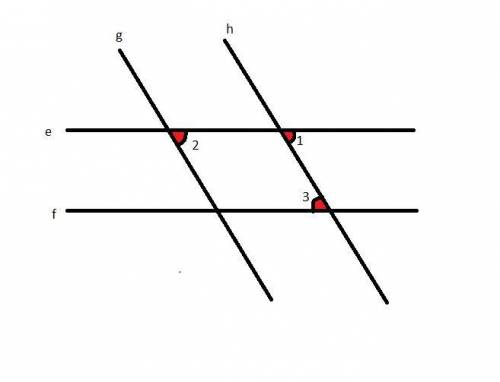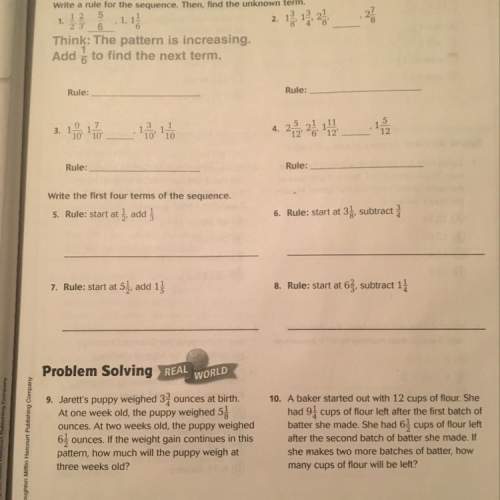
Mathematics, 22.04.2020 18:59 only1cache
Given: g ∥ h and ∠2 ≅ ∠3
Prove: e ∥ f
Horizontal and parallel lines e and f are intersected by diagonal and parallel lines g and h. At the intersection of lines g and e, the bottom right angle is angle 2. At the intersection of lines h and e, the bottom right angle is angle 1. At the intersection of lines f and h, the top left angle is angle 3.
Statements Reasons
1. g || h 1. given
2. ∠1 ≅ ∠2 2. corresponding angles theorm
3. ∠2 ≅ ∠3 3. given
4. ∠1 ≅ ∠3 4. transitive property
5. e || f 5. ?
What is the missing reason in the proof?
vertical angles theorem
alternate exterior angles theorem
converse corresponding angles theorem
converse alternate interior angles theorem

Answers: 2
Another question on Mathematics


Mathematics, 21.06.2019 14:00
The table shows the distance traveled over time while traveling at a constant speed.
Answers: 1

Mathematics, 21.06.2019 15:10
Two lines that do not intersect are skew. always sometimes or never
Answers: 1

Mathematics, 21.06.2019 15:30
The local farm is advertising a special on fresh picked peaches. the farm charges $4.25 to pick your own peck of peaches and $3.50 for each additional peck you pick. write an equation for the total cost of peaches in terms of the number of pecks. deine your variables. how much does it cost to pick 3 pecks of peaches?
Answers: 3
You know the right answer?
Given: g ∥ h and ∠2 ≅ ∠3
Prove: e ∥ f
Horizontal and parallel lines e and f...
Prove: e ∥ f
Horizontal and parallel lines e and f...
Questions



Chemistry, 26.08.2020 18:01


Chemistry, 26.08.2020 18:01

Mathematics, 26.08.2020 18:01

Mathematics, 26.08.2020 18:01

Mathematics, 26.08.2020 18:01

Biology, 26.08.2020 18:01

History, 26.08.2020 18:01



History, 26.08.2020 18:01


Mathematics, 26.08.2020 18:01





 and
and  .
. , by corresponding angles (same side of the transversal, one interior, the other exterior to parallels).
, by corresponding angles (same side of the transversal, one interior, the other exterior to parallels). , we must demonstrate a congruence between angle 2 and an angle on the intersection between line g and line f.
, we must demonstrate a congruence between angle 2 and an angle on the intersection between line g and line f.
 is the angle at the intersection line g and line f.
is the angle at the intersection line g and line f.





